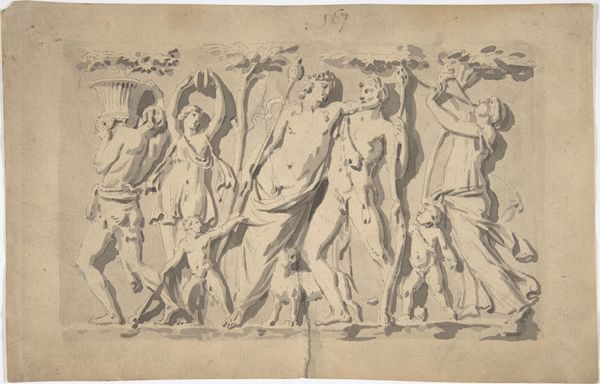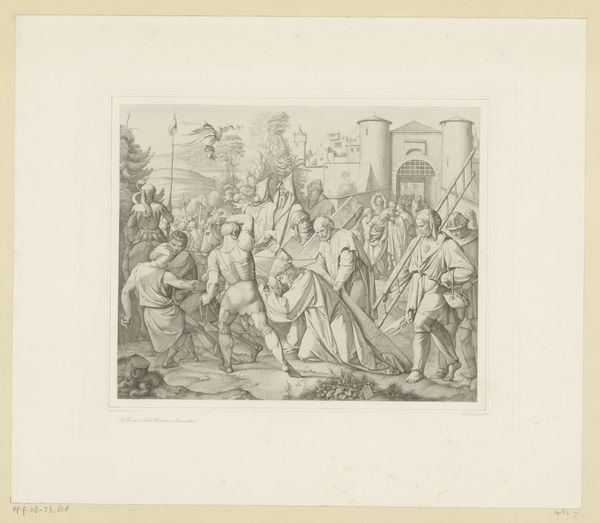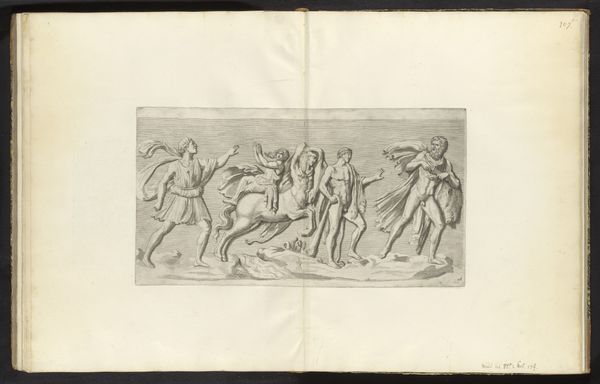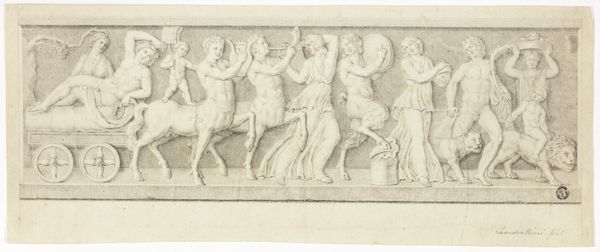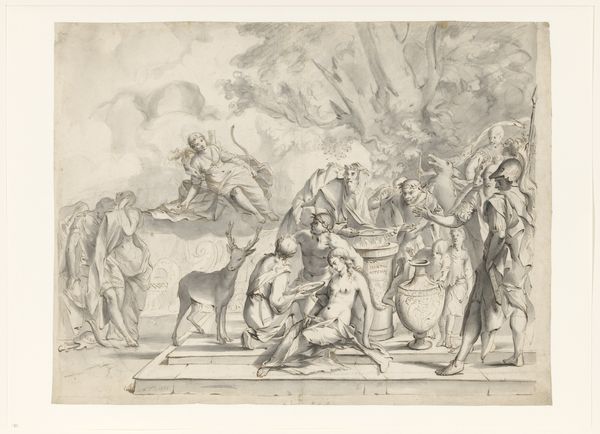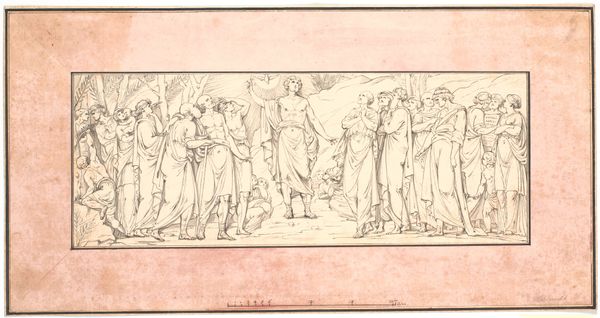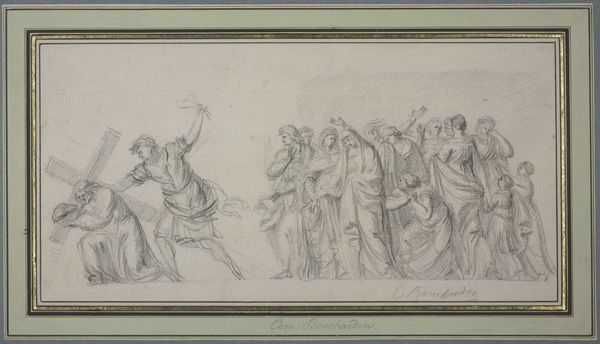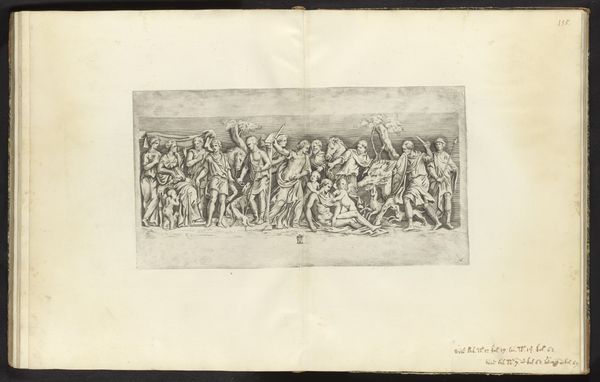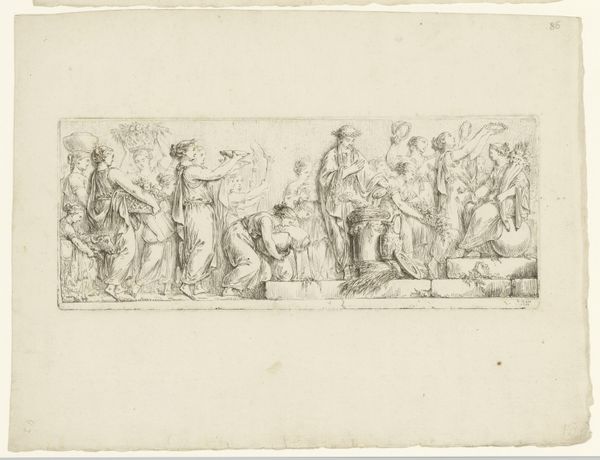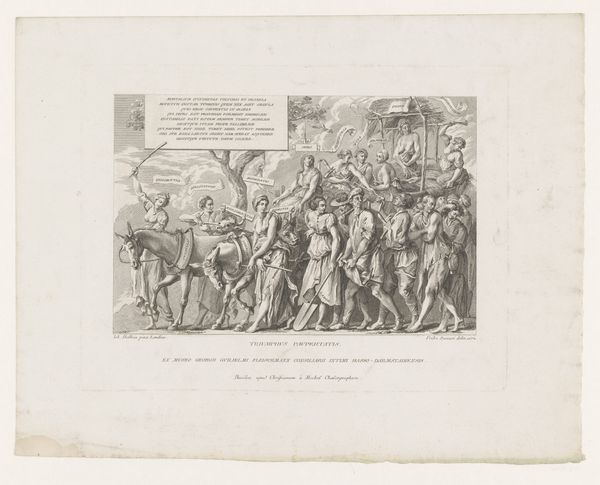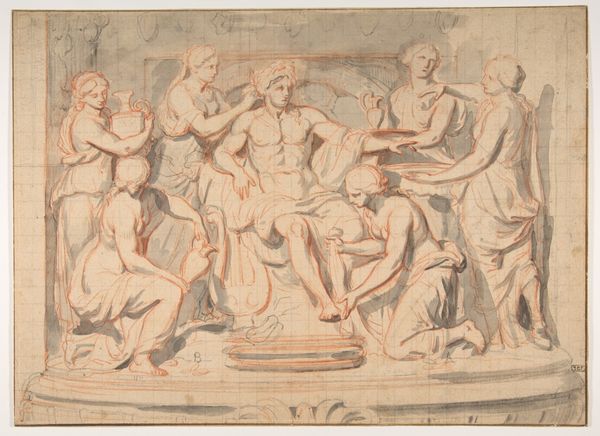
Design for a Frieze, after a Roman Sarcophagus: The First Visit of Bacchus to Ariadne 1775 - 1826
0:00
0:00
drawing, print, pencil
#
portrait
#
drawing
#
neoclacissism
# print
#
landscape
#
classical-realism
#
figuration
#
pencil drawing
#
pencil
#
line
#
history-painting
#
academic-art
Dimensions: 9-13/16 x 25-3/8 in. (24.9 x 64.4 cm)
Copyright: Public Domain
John Flaxman made this drawing, “Design for a Frieze, after a Roman Sarcophagus: The First Visit of Bacchus to Ariadne," using graphite and gray wash on paper. This frieze depicts the god Bacchus’s arrival to Ariadne, after she was abandoned on the island of Naxos. As a drawing, the work lacks the immediate materiality of the sarcophagus it represents. However, Flaxman’s decision to work in graphite and gray wash, applied with precision, brings out the texture and weight of the stone carving. Flaxman evokes the skilled labor involved in carving marble reliefs, and the deep cultural significance of classical sculpture. Note the repetitive forms and idealized figures: these reflect the way ancient forms were being revived and reimagined during the Neoclassical era. Flaxman’s drawing reminds us that even seemingly timeless art forms are rooted in specific historical moments and social contexts. It invites us to consider the labor, materials, and cultural values that shape our understanding of art.
Comments
No comments
Be the first to comment and join the conversation on the ultimate creative platform.
